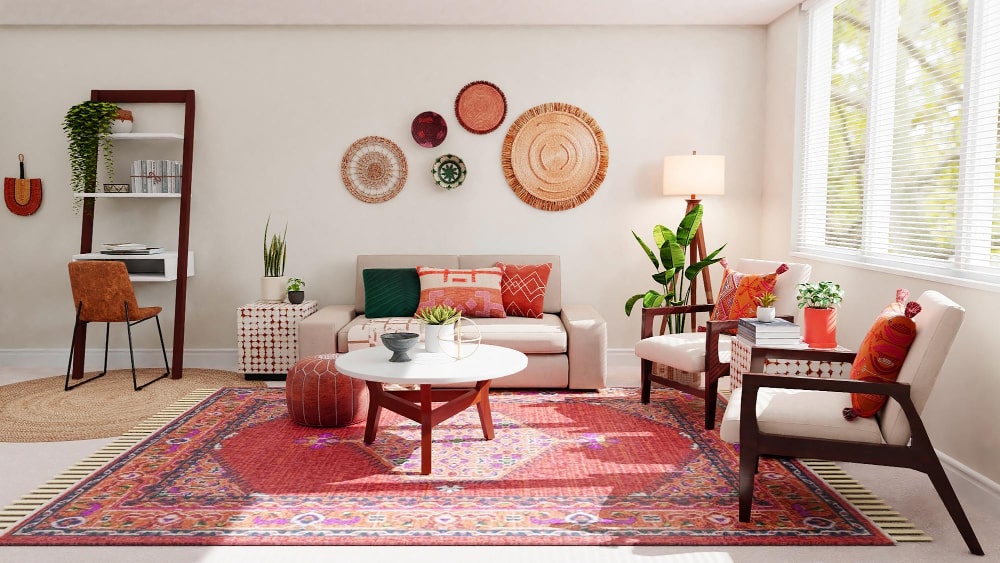Leading interior design firms offer innovative solutions.
Leading interior design firms offer innovative solutions.
Blog Article
Transform Your Home With Vital Concepts of Interior Decoration and Aesthetics
By comprehending the influence of color concept and the significance of appearance and patterns, one can develop rooms that are not only visually enticing yet additionally deeply personal. Achieving this balance includes even more than plain decor; it includes a strategic plan and an eager understanding of how each component interacts within an area.
Understanding Color Concept
Understanding the concepts of color theory enables developers to produce rooms that reverberate mentally with residents while satisfying practical requirements. Each classification plays a vital role in developing consistency within a room.
The emotional impact of colors is extensive; cozy shades such as reds and oranges stimulate energy and heat, while trendy tones like blues and eco-friendlies advertise calmness and peace. Additionally, using complementary colors improves visual interest, creating striking contrasts that can boost a room's appeal.
Neutral shades, on the other hand, function as a versatile background, permitting various other style aspects to beam. It is important to take into consideration variables such as illumination and the space's objective when selecting a shade combination, as these can change the perception of shades throughout the day.
Eventually, a well-considered shade scheme can change an area, promoting a feeling of convenience and style that lines up with the residents' preferences. Proficiency of shade theory is, therefore, an essential skill for any kind of indoor developer intending to develop harmonious and inviting settings.
Attaining Balance in Design
How can developers attain a feeling of balance in their spaces? Achieving balance in design is basic to developing unified interiors. Developers can utilize three key kinds of equilibrium: symmetrical, unbalanced, and radial. In proportion equilibrium includes setting up components uniformly around a main point, promoting a sense of order and harmony. This type typically features sets of furniture or art work, boosting visual security.
Unbalanced equilibrium, on the other hand, depends on varying elements that still achieve a natural appearance. This method permits for more vibrant and casual setups, providing rate of interest while preserving stability. By meticulously choosing differing dimensions, colors, and structures, designers can develop a visually engaging space that feels balanced yet energised.
Radial equilibrium stresses a central focal factor with aspects radiating outward. This style is generally seen in round designs, where furniture and decor produce a cohesive surround that draws the eye inward.
Eventually, attaining equilibrium calls for thoughtful consideration of scale, proportion, and the relationships in between aspects. miami interior design. By skillfully using these balance concepts, developers can change rooms into environments that really feel both aesthetically pleasing and functionally unified, enhancing the total experience for occupants
Relevance of Spatial Recognition

An eager sense of spatial understanding enables developers to determine centerpieces within a space, assisting the visitor's focus to key why not try these out attributes while maintaining a general feeling of unity. It also helps in the critical placement of lighting, which can significantly influence the understanding of area and state of mind. In addition, recognizing spatial connections allows the developer to accommodate the certain needs of citizens, ensuring that each location offers its desired purpose without jeopardizing appearances.
Ultimately, spatial recognition is critical for optimizing the potential of any kind of indoor area. By meticulously taking into consideration the interplay between measurements, design, and function, developers can create environments that not only meet functional needs but also stimulate a feeling of comfort and appeal, enhancing the general living experience.
Including Texture and Patterns
Welcoming a varied variety of appearances and patterns can significantly improve the visual and responsive charm of an indoor room. The calculated use different products-- such as wood, steel, fabric, and stone-- creates depth and rate of interest, making a room really feel much more welcoming and vibrant. For example, integrating smooth surface areas with harsh structures can establish a balance that attracts the eye and engages the senses.
When integrating patterns, consider both scale and rep. Big patterns can function as focal factors, while smaller, refined styles can enhance various other aspects without overwhelming the area. Layering patterns, such as pairing floral paddings with striped tosses, includes complexity and a sense of harmony if executed attentively.
It is likewise crucial to maintain a natural color palette, guaranteeing that textures and patterns interact rather than compete for focus. By picking a couple of essential textures and patterns, you can create an unified aesthetic that shows your individual design while improving the overall atmosphere of the space. Ultimately, the mindful unification of these elements can change a mundane room into a sophisticated setting abundant with personality and heat.
Personalizing Your Area
Developing a space that reflects your individuality is important to achieving a truly inviting setting. Personalization in interior basics decoration allows you to instill your one-of-a-kind design and passions into your home, transforming it from a plain sanctuary into a haven that speaks with that you are. Begin by choosing a shade combination that reverberates with your feelings-- strong hues can energize, while soft tones supply harmony.
Incorporate artwork and design that mirror your enthusiasms, whether it be traveling, nature, or abstract concepts. Presenting personal collections, such as books, photographs, or mementos, can evoke cherished memories and create centerpieces within a space. In addition, take into consideration personalizing useful items, like upholstered furniture, to straighten with your aesthetic choices.

Verdict
In verdict, the transformation of a home with the crucial principles of interior design and looks demands an extensive understanding of shade concept, equilibrium, spatial awareness, appearance, and Read Full Report customization. Each element adds dramatically to producing an unified and functional living atmosphere - miami luxury interior design. By attentively incorporating these concepts, individuals can boost the visual appeal and emotional vibration of their rooms, eventually fostering a home that mirrors one-of-a-kind identifications while supplying convenience and usefulness
Report this page